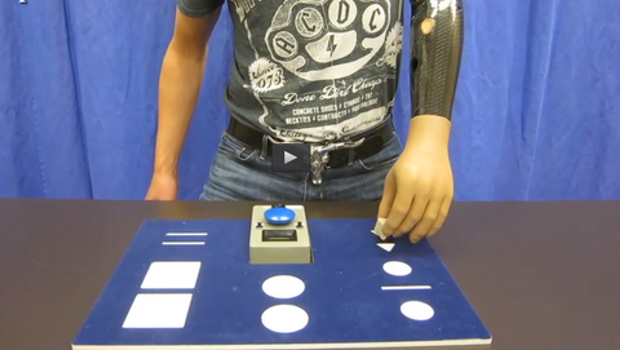A trio of Austrian men have had their paralysed hands amputated and replaced with nerve-controlled robotic prostheses, according to a new study.
The men are the first to undergo the ‘bionic reconstruction’ surgical technique, which resulted in restored function that helps the men in daily living activities such as being able to pour water from a jug, the study in The Lancet medical journal said.
Robotic hands activated by nerve impulses or app signals have been under development for years, but the study is the first to combine the surgical method with the technology. It paves the way for greater use of advanced prostheses for people with limb problems.
The three patients suffered paralysing injuries related to nerves in the neck area. They chose to be fitted with robotic prostheses that have sensors that can respond to electrical impulses in muscles.
The surgeries and rehabilitation were carried out under Oskar Aszmann from the Medical University of Vienna, who is the lead author of the study, along with engineers from University Medical Center Goettingen. They created neural inputs for hands developed by German prosthetics maker Ottobock including the Michelangelo Hand, which can be adjusted via Bluetooth-linked PC software.
“The scientific advance here was that we were able to create and extract new neural signals via nerve transfers amplified by muscle transplantation,” Aszmann said in a release. “These signals were then decoded and translated into solid mechatronic hand function.”
The patients underwent cognitive training and practiced with the robot hands for an average of nine months before surgery in order to develop useful nerve signals to control the prostheses.
In a series of videos for the study, the patients can be seen trying to manipulate various objects first with a paralysed hand, then with the prosthesis attached via a splint-like device while training before surgery, and finally with the prosthesis alone after surgery. The videos show significant improvement in dexterity and speed.
Following the surgery, for the first time since their accidents the three men were able to do things like pick up a ball, use a key, cut food with a knife and use two hands to undo buttons. Mental health improved in two patients and remained the same in the third, according to the study.
The procedure could be successfully carried out at any center with the same surgical and technical resources, the authors concluded.
IDG News Service







Subscribers 0
Fans 0
Followers 0
Followers